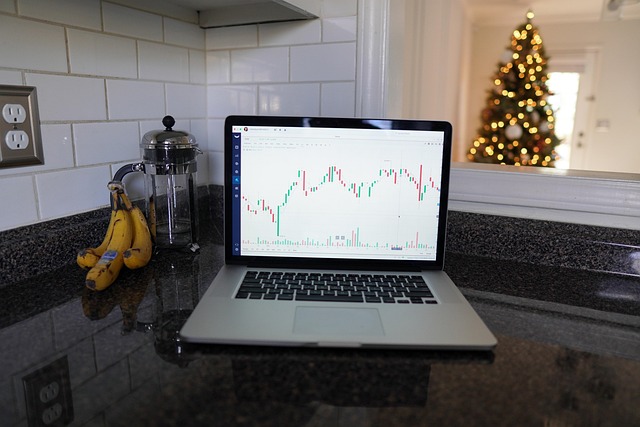To become a successful full-time trader and achieve "wealth within," set SMART (Specific, Measurable, Achievable, Relevant, Time-bound) goals tailored to your risk tolerance, time commitment, and market conditions. Regularly review and adjust these objectives based on market dynamics, focusing on short-term or long-term strategies for income or profit margins. Start with defined risk tolerance and investment timeline, guiding trade choices and expected outcomes: conservative, smaller gains for lower risk; aggressive strategies targeting larger returns for higher risk.
Aspiring to be a full-time trader? Achieving wealth within this dynamic arena demands clear goals and meticulous performance monitoring. This comprehensive guide equips you with the tools to define your trading objectives using the SMART framework, align them with your financial aspirations, and choose the right tracking mechanisms. Learn how regular reviews and adjustments can optimize your strategies in response to market shifts, ensuring consistent progress toward your wealth goals.
- Define Your Trading Objectives
- – Setting SMART goals for full-time trading
- – Determining risk tolerance and investment timeline
Define Your Trading Objectives
To embark on a successful journey as a full-time trader, defining your trading objectives is the first step towards achieving wealth within. Your goals should be clear, measurable, and tailored to your unique aspirations. Whether it’s generating a consistent monthly income, accumulating a specific amount of capital in a year, or reaching a certain level of profitability per trade, setting quantifiable targets keeps you focused and motivated. Ensure your objectives align with your risk tolerance, time commitment, and the market conditions you intend to operate within.
When defining your trading goals, consider both short-term and long-term wealth creation strategies. Short-term goals might include mastering specific trading techniques or improving risk management skills. Long-term objectives could revolve around building a diverse portfolio, diversifying income streams through various markets, or even establishing yourself as a respected figure in the financial world. Regularly reviewing and adjusting these goals will keep you on track, enabling you to adapt to the dynamic nature of financial markets and navigate towards the wealth within your reach.
– Setting SMART goals for full-time trading
To become a successful full-time trader and achieve wealth within your trading journey, setting SMART goals is a fundamental step. SMART stands for Specific, Measurable, Achievable, Relevant, and Time-bound. For traders aiming to dedicate their time to the market, having clear and defined objectives is crucial. Start by specifying what you want to accomplish; whether it’s generating a consistent monthly income or reaching a specific profit margin within a year. Ensure these goals are measurable, so you can track your progress. Achievability should also be considered—set realistic targets that align with your skills and the current market conditions.
Relevance is key; your goals should drive your trading strategy. For instance, if your aim is to focus on short-term trades for quick profits, setting daily or weekly goal parameters makes sense. Conversely, long-term wealth accumulation might require annual performance targets. Time-bound goals provide a sense of urgency and help you stay disciplined. Regularly reviewing and adjusting these goals based on market dynamics will keep you motivated and on track to amassing wealth within your chosen trading career.
– Determining risk tolerance and investment timeline
Before diving into the world of full-time trading and aiming for wealth within, it’s imperative to define your risk tolerance and investment timeline. These two factors are the cornerstone of a successful trading strategy. Understanding how much risk you’re comfortable taking is crucial; it dictates the types of trades you’ll engage in and the potential rewards and losses you anticipate. For instance, if you have a lower risk tolerance, you might prefer more conservative strategies focusing on smaller, consistent gains over time. Conversely, higher risk tolerance traders may seek larger, less frequent returns by employing more aggressive tactics.
Equally important is setting your investment timeline—whether it’s short-term trading for quick profits or long-term investments for wealth accumulation. A defined timeline provides a clear direction and helps you align your trading decisions accordingly. For those aspiring to be full-time traders, a shorter timeline might mean frequent trades, requiring meticulous monitoring of market trends and adaptability. In contrast, a longer investment horizon allows for more strategic, less頻繁 trades, focusing on fundamental analysis and long-term growth prospects.
To successfully transition into a full-time trading role and achieve wealth within your desired timeline, setting clear goals is paramount. By utilizing SMART goal-setting principles and understanding your risk tolerance, you can create a robust foundation for your trading journey. Regularly monitoring your trading performance allows for continuous improvement and ensures you stay on track to reach your financial aspirations. Embrace these strategies, remain disciplined, and you’ll be well on your way to building wealth through active trading.
